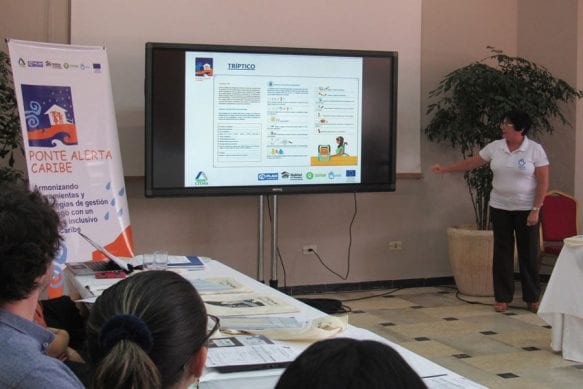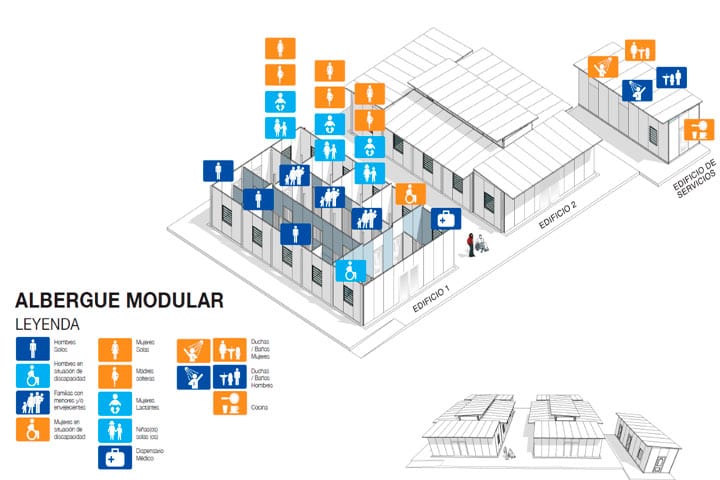Cuba and DR Work on Caribbean Disaster Response
This project is a collaboration between Cuba and the Dominican Republic to strengthen risk management tools and to create a more effective regional strategy.

HAVANA TIMES – The binational “Ponte Alerta Caribe” (Get ready Caribbean) project, completed its plan of action last Friday in the Cuban capital after over a year of hard work, set out to strengthen collaborative efforts and to draw up more effective regional strategies to reduce risks in the event of natural disasters in the Caribbean.
During 2017 and 2018, the Caribbean islands suffered the devastating impact of two category 5 hurricanes, intense local droughts and severe coastal flooding. These climatic events put disaster risk management tools to the test and made it clear that more efficient programs were desperately needed to reduce risks.
The first step was creating a partnership between both countries and the Caribbean Disaster Emergency Management Agency (CDEMA), which in Cuba’s case was consolidated with the signing of a memorandum of understanding for future collaboration agreements between this international government organization and the Civil Defense Chief of Staff.
After the experience of Hurricanes Irma and Maria in 2017, it became clear that the Caribbean’s largest islands would need to form part of the association, which paved the way for dialogue, Ricardo Tellez, the Cuban coordinator of Ponte Alerta Caribe, explained to IPS Cuba.
Other actions, such as the workshop on Gender Leadership in Humanitarian action and Protection, also involved Haiti.
The implementation of makeshift shelters in Cuba is one of the pending issues that the new collaborative project has focused on.
The project was implemented by NGOs Oxfam, Humanity and Inclusion (HI), Plan International, Habitat for Humanity and the Cuban Ministry of Science Technology and the Environment, and received funding from the General Directorate of Civil Protection and Humanitarian Aid of the European Union (ECHO).
Redefining inclusion terms
A cross-cutting issue on the project’s plan of action was making sure that disaster risk management tools and strategies were updated, taking an inclusive approach.
According to Carla Vita Antonio, the HI representative in Cuba, this was a successful outcome, bearing in mind the fact that handicapped people actively took part in every stage of the process and a relationship was created between decision-makers and beneficiaries of the program.
“There are still many challenges: changing the assistance approach that prevails in most of the world takes time, for people with handicaps too, but we have made progress,” Vita Antonio said.
The design and implementation of an inclusive early warning system in the face of tsunamis in the Baracoa municipality (in Cuba’s far-east and constantly under threat from these disasters), was perhaps one of the most ambitious goals on this action plan.

After several workshops, evacuation maps were reworked and they managed to design an inclusive early warning system that combines the use of sirens with strobe lights (blinking quickly and intermittently), colored flags, megaphones and other sound devices.
Meanwhile, different leaflets and communication products were made to continue with training programs in grassroots associations that gather people with disabilities and offer an updated and more inclusive version of the Family Plan.
All of these tools were validated by the corresponding lead agencies at a national level.
A tide gauge was also purchased with funds for the project, which will allow a more precise forecast in Baracoa about the event of tsunamis taking place in the area between Cuba, Haiti and the Dominican Republic.
Binational collaborative efforts continue
According to Carlos Arenas Lopez, the head of Oxfam’s Humanitarian Action program in the Dominican Republic, the project’s most important achievement has been the creation of an exchange platform that will allow the plan of action for risk management to continue in both countries.
With this in mind, the project “Learning from Irma and Maria” will launch this year and will build on the work carried out by Ponte Alerta Caribe and some of its pending issues. This includes the trial of makeshift shelters in Cuba.
This technology was used for the first time in the Dominican Republic after Hurricane Matthew swept through the country in 2016, when it helped to compensate for the shortage of buildings that met protection criteria and access to services that ensured the rights of the affected.
In this country, many people (especially women and young girls) refuse to go to these makeshift shelters because they are afraid of being sexually abused,” Arenas said.
This is why the Cuban structure will take into account the separation of vulnerable groups, as well as different structures for handicapped men and women, families with children and/or the elderly.
Another strength is that the materials used have proven to be resistant in the event of earthquakes, heavy rains and winds.
“Learning from Irma and Maria” also sets out to create new risk management centers in Matanzas and setting up a seismograph in the south of this province, which will strengthen the national seismographic network, which is still weak in Cuba’s western provinces.





